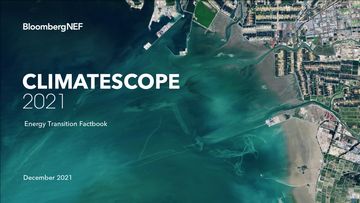
Transport
$500 billion
Global clean transport investment in 2016-2020
105,000
Electric vehicles sold in emerging markets (excluding China) in 2020
3.2 million
Electric vehicles sold globally in 2020
Clean transport investment reached $500 billion in 2016-2020
Global asset finance for clean road vehicles and infrastructure totaled $500 billion in 2016-2020. In 2020 alone, the sector attracted $139 billion, up 28% from the previous year and 112% up from 2016.
Investment into passenger electric vehicles (EV) accounted for 70% of the total over the past five years and 85% in 2020. This is also the fastest growing segment of clean transport investment, with a four-fold growth in five years and a 43% jump from 2019-2020. Electric bus sales were the second biggest segment for clean road transport investment. However, investment in busses has not risen consistently. Funding totaled $21 billion in 2016 and $11 billion in 2020.
Global passenger electric vehicle sales have tripled in four years
Global passenger EV sales reached 3.2 million in 2020, a tripling from 2017. From 2019 to 2020 alone, annual sales spiked 45%. BNEF expects 2021 to be yet another record with 5.6 million sold in total.
EV sales accounted for 4.4% of global car sales in 2020. This is up from 2.7% in 2019 and just 0.6% in 2015. Record high EV sales in 2020 put a dent in sales of internal combustion engine (ICE) vehicles. These were down 16% globally in 2020, allowing for EVs to gain market share.
Emerging market EV sales are highly concentrated in China
China accounted for 92% of 2020 EV sales in emerging markets with 1.2 million vehicles sold. Since 2015, the country has seen 4.3 million such vehicles sold, more than the top 10 developed markets for electric vehicles combined.
But EV sales growth has decelerated in China recently. Annual sales in the country nearly doubled in 2017-2018, but rose just 15% in 2018-2020.
Other emerging markets are a tiny share of total global EV sales, but their progress should not be overlooked. In 2020, these nations accounted for just 3% of global EV sales and 8% of sales among developing nations. However, the number of units sold in these nations jumped over 50% 2019-2020.
Emerging markets (excluding China) saw a steep growth in EV sales 2019-2020 to just over 105,000 units. This represented a 51% spike from 2019 and a three-fold jump since 2017. Despite some growth, EV sales accounted for less than 0.5% of total vehicle sales in these nations in 2020.
Lack of policies limit EV uptake in emerging markets
Relatively few emerging markets have clean transport policies in force. While 93% of the developed nations surveyed by Climatescope have clean transport targets, just 22% of the emerging markets analyzed do.
Direct purchase incentives, which lower upfront costs of buying EVs, are effective at kick-starting markets, but are still limited to a small share of developing nations. These are expensive for governments, thus harder to introduce in poorer nations. They typically include EV purchase incentives, EV income tax reductions and EV import tax reductions.
Charging infrastructure policies help lower EV deployment barriers. Nearly half of developed nations have EV charging infrastructure targets in place, compared to only 15% of emerging markets surveyed.
Governments are implementing internal combustion engine phase-outs
18 national governments have set dates to eliminate internal combustion engine (ICE) vehicle sales. Another 27 regional and municipal authorities have such goals in force. Since 2019, the year of the last COP, the list has grown by six countries to include: the U.K., Canada, Austria, Singapore, Chile and Greece; three U.S. states including California, Massachusetts and New York; and Quebec province in Canada. Not reflected in this figure is the proposal from the European Commission to phase out sales of ICE vehicles in the EU by 2035. This would add 19 more countries to the list.
The importance of regional ICE phase-out targets should not be underestimated. Sub-national targets can drive real impact, especially in countries where national mandates are yet to be implemented. For example, the U.S. currently has no phase-out target nationally, but state-level ICE phase-out targets already cover about 25% of passenger car sales in the country.
On this page
